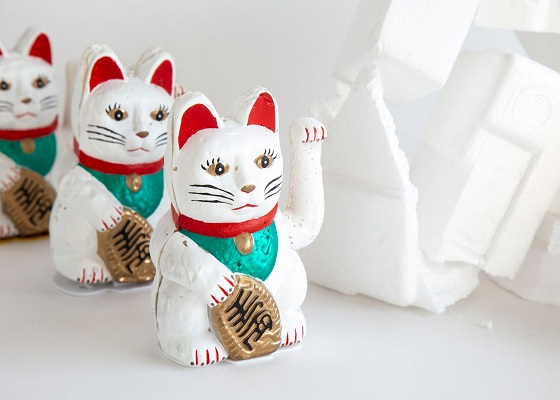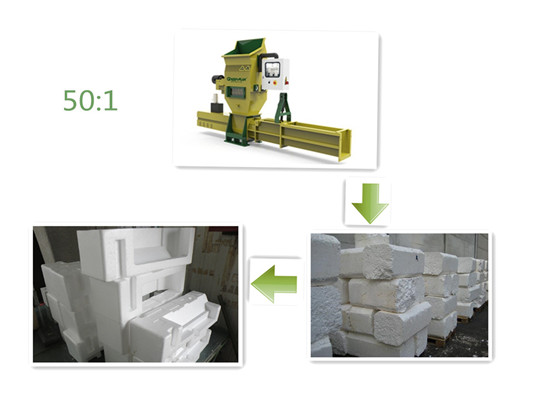Generally, polystyrene appears in our life in the form of packaging materials. Whether express packaging, take-out food containers or packaging peanuts, everyone may be familiar with. But when it comes to decorative art, it seems difficult to relate to polystyrene, not to mention polystyrene recycling.
In fact, it is not only polystyrene that is widely used in our lives, but also recycled polystyrene materials.
It is reported that Katie May Boyd, a graduate of the central Saint Martin Institute, has made an ornament using recycled polystyrene material. She hopes to create a installation that attracts people’s attention to the inefficient recycling of polystyrene waste, and chose to focus on the Japanese Maneki-neko cat as a symbol of a mass-produced object that is commonly made in China.
According to the research, Boyd found that 30% of British plastic waste was sent to China until March 2018, when China imposed a ban on foreign waste. This has created problems in the UK, where there is no domestic infrastructure to handle large amounts of polystyrene waste and has previously relied on China for these purposes.
Boyd’s investigation and its new application of recycled polystyrene have attracted public attention. This project calls for people to actively recycle polystyrene waste and reduce the waste of resources.
When it comes to polystyrene recycling, mechanical recycling has been the most effective methods so far. The foam recycling machine like GREENMAX polystyrene compactor can reduce the foam volume up to ratio 50:1 without changing its chemical properties. And the whole recycling process is simple and efficient.
The recycled polystyrene material can be used to make many other foam products expect for Maneki-neko cat. Due to the lightweight and easy-to-shape properties, the recycled polystyrene can be also used to make pictures frames, decorative molding, CD boxes and so on.


